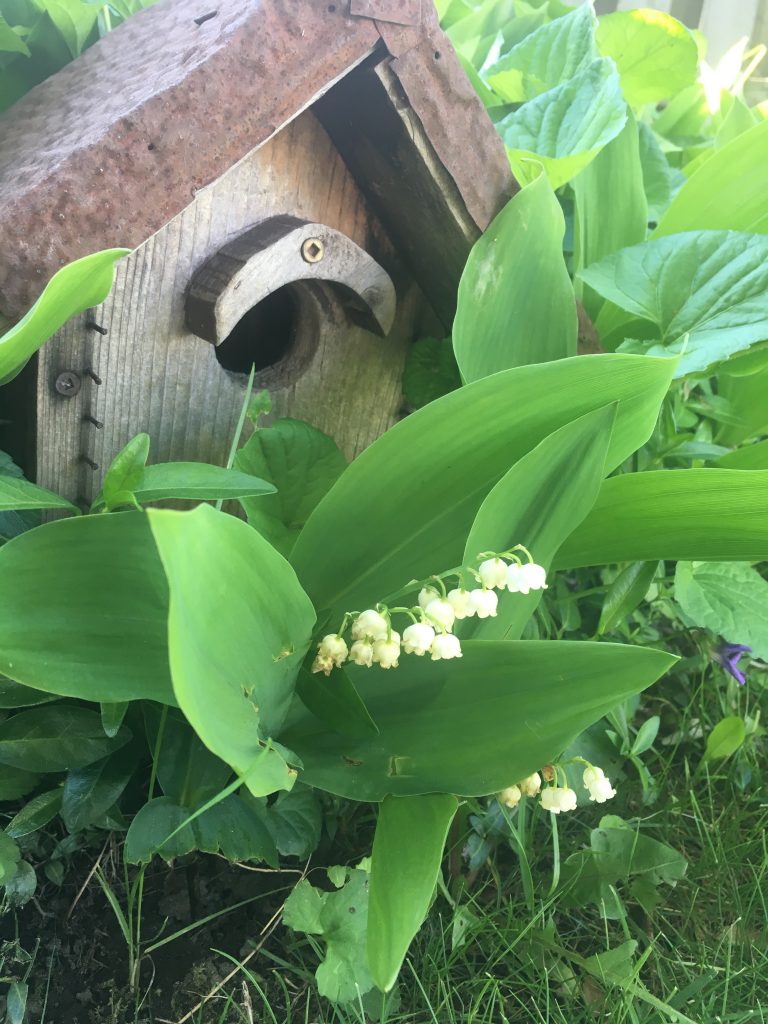One of the pieces that comes to mind when I think of home education is the benefit to communities. I’m not referring to homeschool communities themselves, either in-person or online (those are of great value too, but intentional community happens within any number of places like schools, churches and more), but to the natural, physical communities people live in.
Home education is growing, but is still misunderstood by many, and one of the largest misconceptions is that children are away from community somehow. In fact, children and teens and parents are often out and about, living real life in the real world and that often includes being a positive part of their communities.
So, here are five key ways that I see home education contributing to positive and healthy community:

1.It makes use of community space ...
“Oh, here?” My friend sounded surprised to see the building that my daughter’s classical ballet was taking place in. We were meeting to have a walk and picnic during the two hour class. I’d given her the address to meet me. She looked a bit confused as she got out of her car and looked at the heritage neighbourhood community centre, a historic one room school building, surrounded by a green park and playground. I guess it wasn’t the standard idea of a dance studio in a modern plaza.
“Yep, here. The ballet teacher rents it from the neighbourhood association twice a week and her husband and sons have built portable mirrors and bars for bar work. The siblings of the dancers can play out here in the park during the lessons.”
We went on to talk about how the ballet teacher and her daughter work for months ahead of time to create the costumes for the year-end recital at no cost to families and how families donate materials as they find them. I told her that parents spell one another off if someone needs to go to work or pick up/be with another child. I spoke of my gratitude that the girls were receiving such top notch instruction, without the common pitfalls of the world of dance. No parent drama, no competition, zero body shaming – just a lovely group of dancers genuinely wanting to study classical ballet together in a focused, supportive environment.
It had never struck me as strange, really, this portable school of classical ballet, but in thinking about it, I guess most lessons are in studios that are used for that purpose. I like the idea of multi-purpose buildings. Communities have changed over the years and some of those buildings and associations might not necessarily be used as much as they used to be. Putting them to use feels good.
What other community spaces do home educators support during those weekday, off-hours?
Recreation facilities
Sports complexes with gyms, pools, ice rinks and tracks have management that have figured out there is a market in the homeschool community to hold sports access and lessons during the slower weekdays when so many other kids are in school. Arts centres realize they might be able to attract enough families to offer classes and open studio time.
Is this an actual gain though? Would families just have signed up for evening or weekend classes anyway? Maybe, but likely not so many. Daytime activities are a common way for home educating kids to get together with friends and also try their hand at different activities, but many families like to keep lots of space open and not be rushing around with evening and weekend crowds. My own children have been able to dabble at a number of things offered during the daytime hours that we likely would not have pursued during the evenings and weekends. For the extroverts, especially, it has been a way to connect with friends at the same time as doing either a new or familiar activity.
Outdoor Activities:
Establishments such as skiiing/snowboarding resorts, kayaking/canoeing/fishing businesses or adventure sports like tree-top trekking and ziplining frequently offer one day group programs or in several cases, weekly programs or memberships.
Places of Worship:
Through the years, we have been part of groups who have utilized space in churches for everything from weekly get togethers to events. Sometimes groups pay rent to the church for particular periods of time. Other times, in less formal arrangements, parents pool money to offer a donation.
Some churches already have small schools renting their space on weekdays, but others do not, so this extra use is quite welcome, and sometimes financially helpful.
Libraries:
Home educating families often have a very supportive relationship with their local libraries. Librarians and library technicians can get to know children and what they might be interested in specifically, becoming really helpful resources to families. Families, in turn, support the library system, which benefits from their use. By using the space and resources frequently, families increase their numbers/stats and also provide a small, but steady, weekday patronage. Like recreation centres, libraries are other community spaces that partner with parents, kids and groups in offering various programming that might be of interest. I’m sure I’m not the only one who has indirectly offered financial support to the local library through overdue fines;).

2.It utilizes local talent, gifts and skills …
One of the things that has been a surprise to me is the number of people willing and eager to generously share their time and skills with kids. In turn, it’s often been a small business opportunity for the person, although in some cases the output might be greater than the financial return. It doesn’t seem to be about that though. It seems to be about an opportunity to offer something, and they are so full of enthusiasm with the children they are spending time with.
This has looked like …
An artist welcoming small groups or individual kids to her basement studio to work in individual ways with each. She shares her gifts of time and talent, while simultaneously supporting them to apply techniques in ways they are ready for and interested in.
A carpenter willing to consider using his time and professional workshop to offer mentorship opportunities to individual kids and small groups. Again, there is this interplay between suggestion/teaching of techniques and supporting projects of interest to the individual.
A ballet teacher, in her senior years, opening up a classical ballet opportunity (mentioned above) to the homeschool community. This itself becomes a whole other community of ballet and an opportunity for her to share her knowledge, perspective and love of dance.
Leadership/ sports coaches from a local community centre who offer group opportunities that move into strong connections with the homeschool community. This opportunity for weekday/“off-time” activity leads to individual relationships and networking that give the leaders further opportunity to use their skills – it’s a win-win.
Librarians who get to know children and families so well that they ask to collaborate about ideas and resources, getting a fresh perspective and being able to offer new things.

3. It is good for the local economy …
Many home educators are quite resourceful with their time and money and it is very possible to home educate with a small budget, but at the end of the day, lots of parents are enriching life in different ways that support learning and interests.
Families buy memberships or pay fees for outings:
Annual memberships to places like museums, zoos and sports centres are very common. Visiting places as a “one-off” here or there are also common, either as a family, with a few friends or as part of a planned group program.
Families attend local events:
I can’t say how many times we have gone to a local community event and seen faces familiar to us. I have seen many of the same families at events that I see at home education activities.
Families buy resources:
Our years of zoo and museum memberships coincided with the kids having some intense interests in particular themes. Between us buying model animals, trains and medieval figurines, and the kids coming in with their own money, gift shops and toy stores in our area did pretty well by us for a while:).
Families buy curricula:
A lot of curricula is purchased online now, from distances away, but local education stores still get some pretty hefty purchases of workbooks and materials. Even families whose main way of focusing on learning isn’t through curricula, often invest in different games, books and materials that support interests and learning.
Families sign up for non- home schooling lessons as well:
Parents tend to work hard to support kids’ interests and if they are in a position to, fill a need that isn’t easily filled at home or through a homeschool activity. Sports, bands, choirs, horseback riding, dance, martial arts, any number of things, really, might fit that description.
I suppose this economic aspect could be offset by the fact that many families have less income coming in by working with only one income, but many, many families do balance jobs or creatively find ways to bring in additional income in partnership with their family life.

4. Families are out and about in community …
“I didn’t realize how many kids we have in our neighbourhood. Where did all of these kids come from? It’s great. We are seeing so many families.” This comment was part of a conversation with someone in relation to the pandemic. With schools closed, she was noticing so many families out walking and biking, and this was even without playgrounds or anything else being opened. Where were they walking and biking to? We decided they didn’t have a destination, other than to be out moving their bodies and exploring a bit – but they were together.
I’ve heard several people talk about how nice it is to have more time together. There is an assumption that it has to go away – it’s just a silver lining of the pandemic – a frill. And for some, it does. As things open up again, of course, people, including home educating families, will have responsibilities to attend to, but isn’t community great when everyone can naturally be involved as possible? Home educated kids are available to be part of everyday community life, sometimes with direct involvement and other times with their presence. Once people get over the surprise of children being “out” during a weekday, many smile at kids being out and about in practical daytime life, helping pack the family’s groceries at the end of the line, or just being there – a breath of fresh air.
Just a few ways and places that having the presence of children around can be a benefit…
- Grocery store
- Helping neighbours
- Flexibility of time for things like having small businesses and newspaper routes
- Available to volunteer at very flexible times
- Employment at very flexible times
- Interaction with extended family and friends, and neighbours

5. Many home educated kids grow up to be quite community – minded and innovative.
Maybe there is a cycle here. When kids grow up without most activities being located in the same building, and are therefore used to seeing connections sourced out in different ways, and with more flexible time to engage in their neighbourhood, maybe a sense of community follows. This won’t look the same for each person and isn’t even the case for everyone. Some children are quite extroverted and it might literally look the way we think it would – lots of involvement in community events, engaging with many people. For others, it might be quieter, such as helping a neighbour, being part of nature events, being a quiet presence in the community. Some aren’t really community – minded at all, but respecting people’s autonomy to be engaged in things when and if they are genuinely interested leads to authentic involvement.
This is quite different than meeting the required number of volunteer hours that is mandatory in our provincial high school system, ticking off boxes so that X number of hours have been met and then not bothering much with that activity again, if at all.
It might not play out only in volunteerism, but in being community-minded within future job, business, neighbourhood, helping family and future children connect to different things or any number of real- life connections.

Natural community is stronger when it includes many people, with a range of ages:).
Enjoy this post? Please share.
Facebook
Twitter
Pinterest
Email

